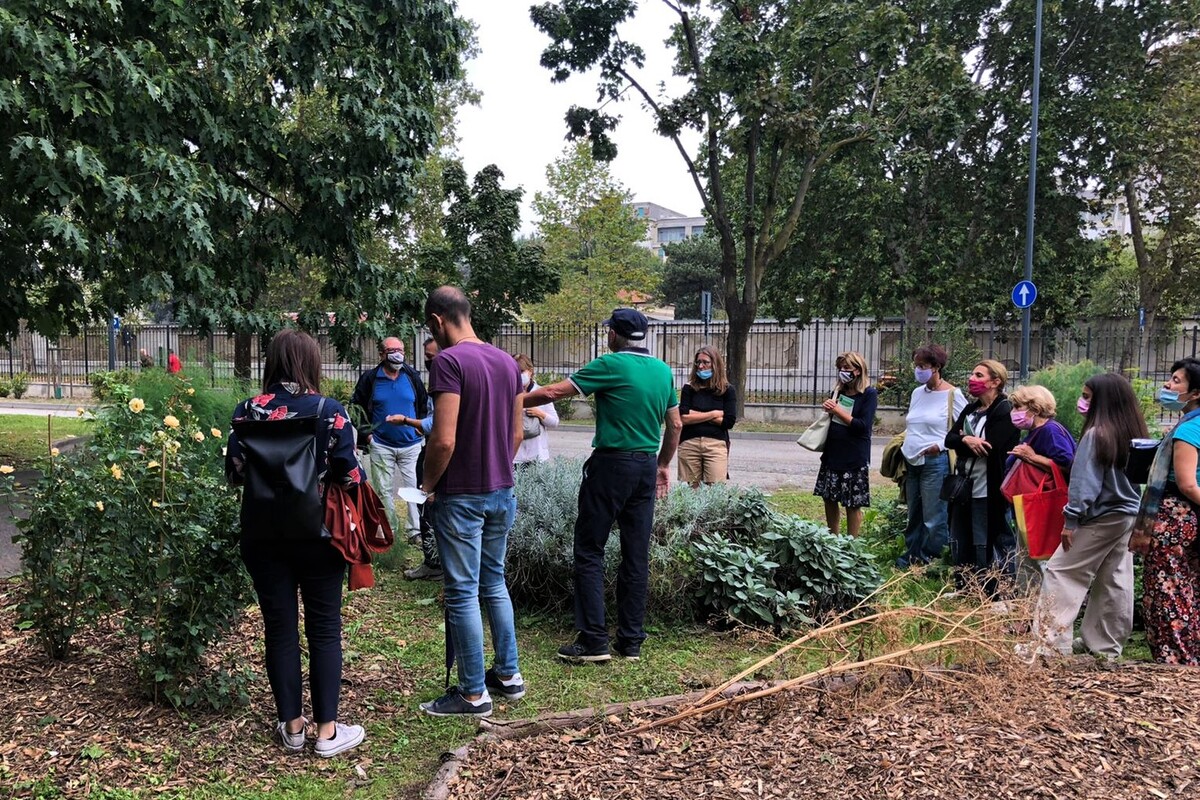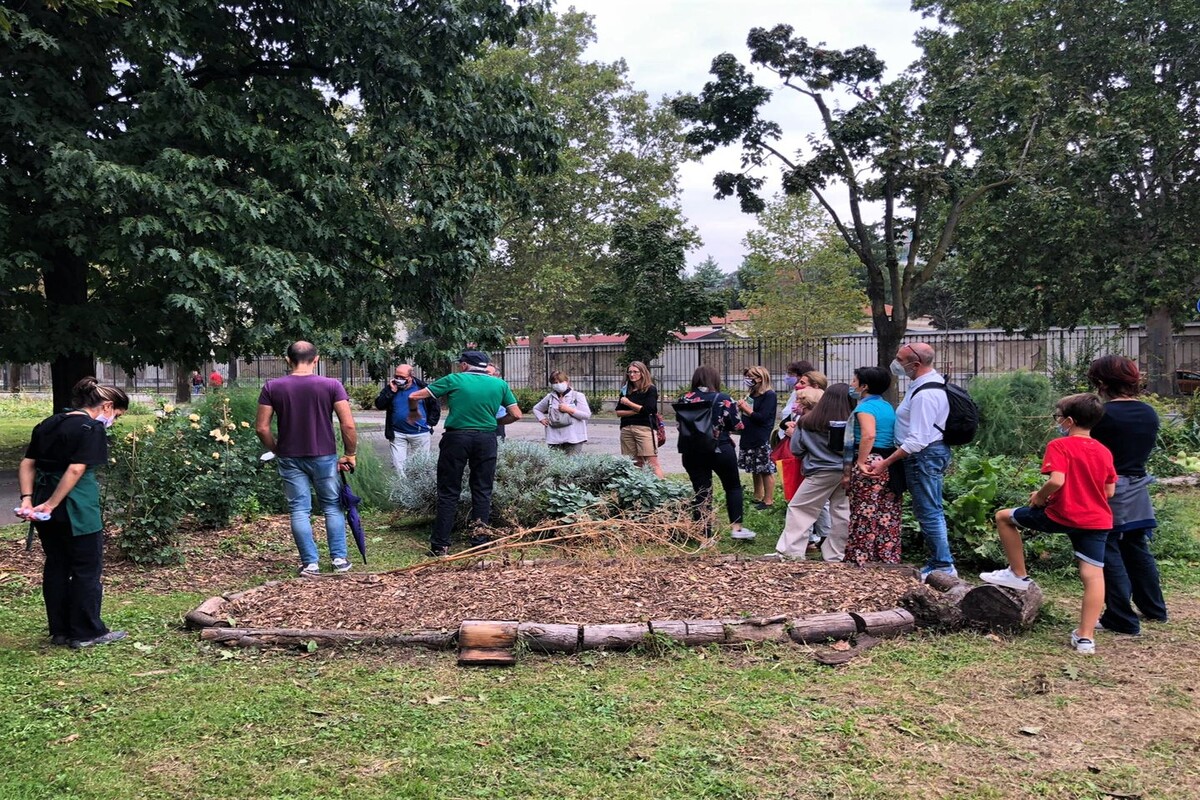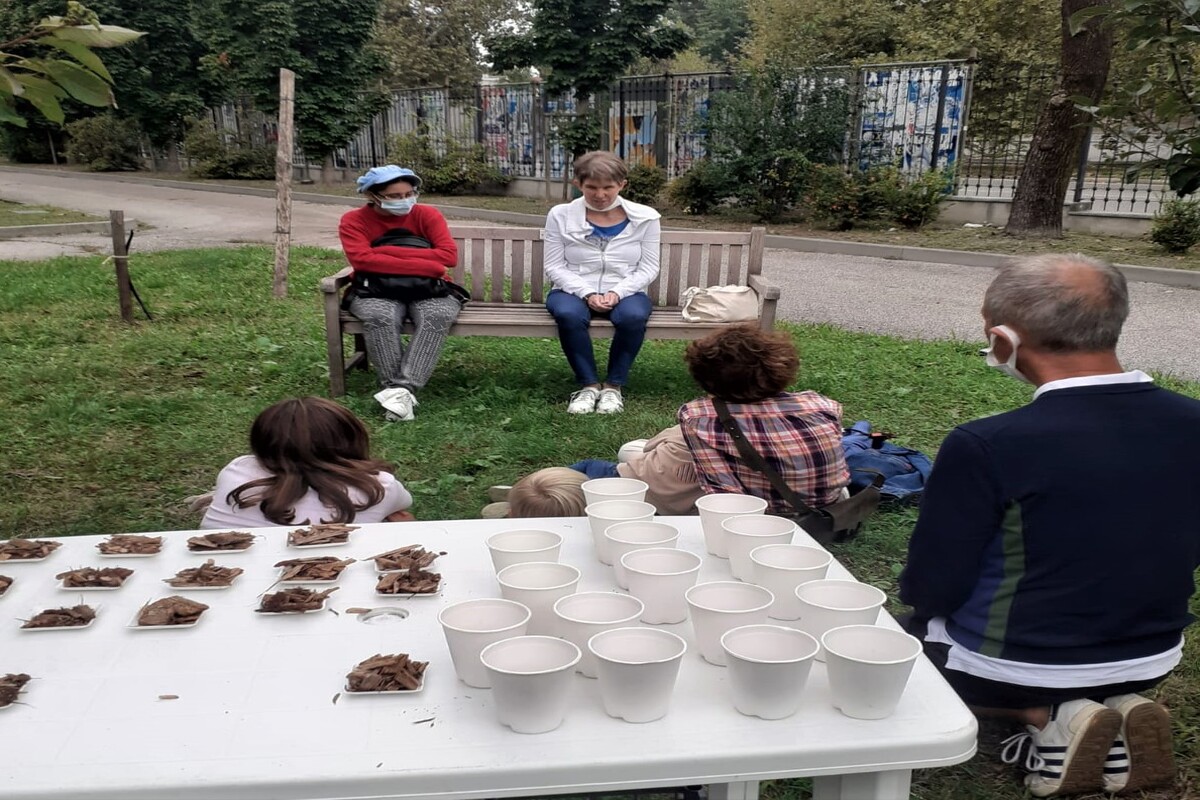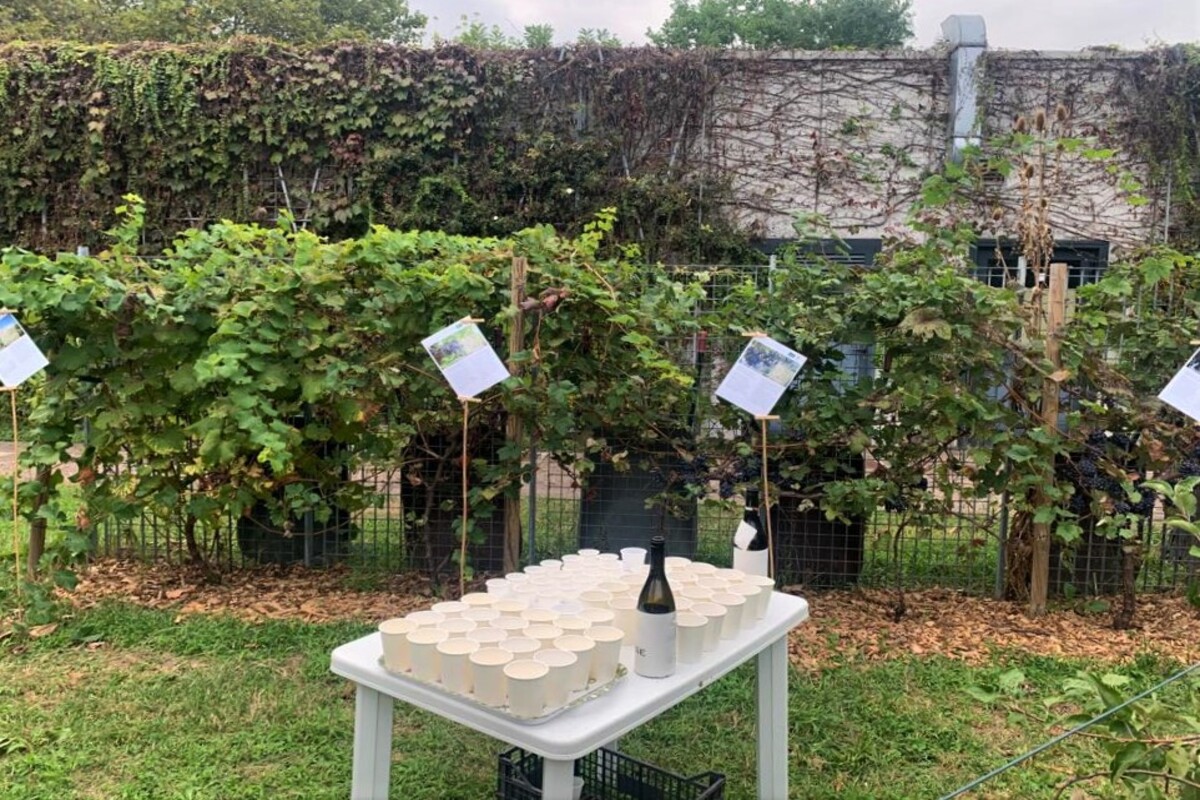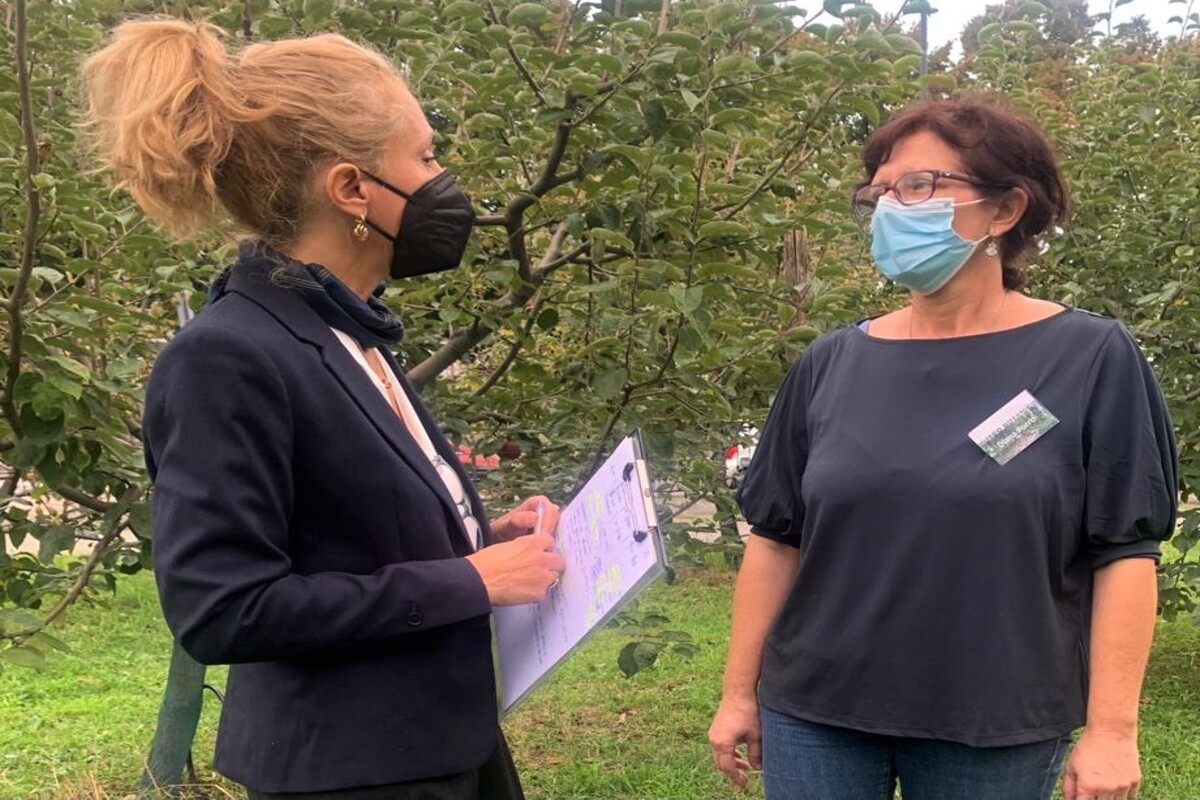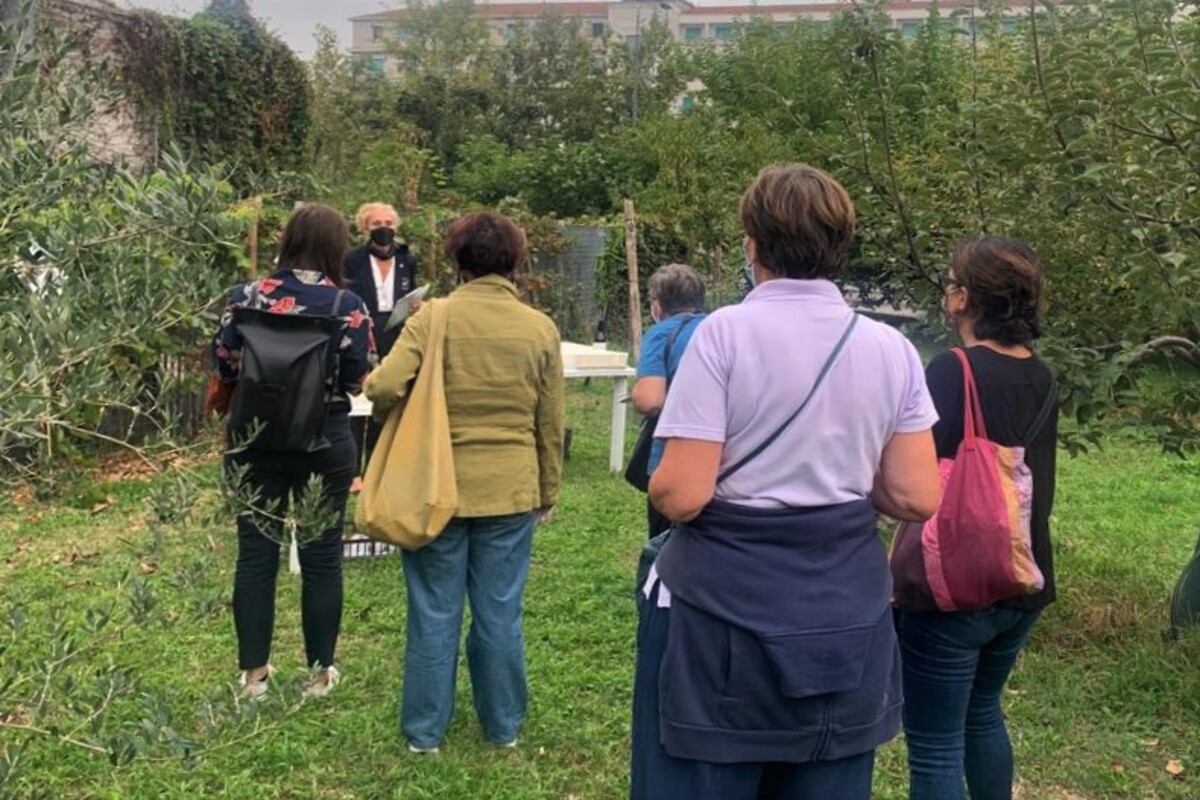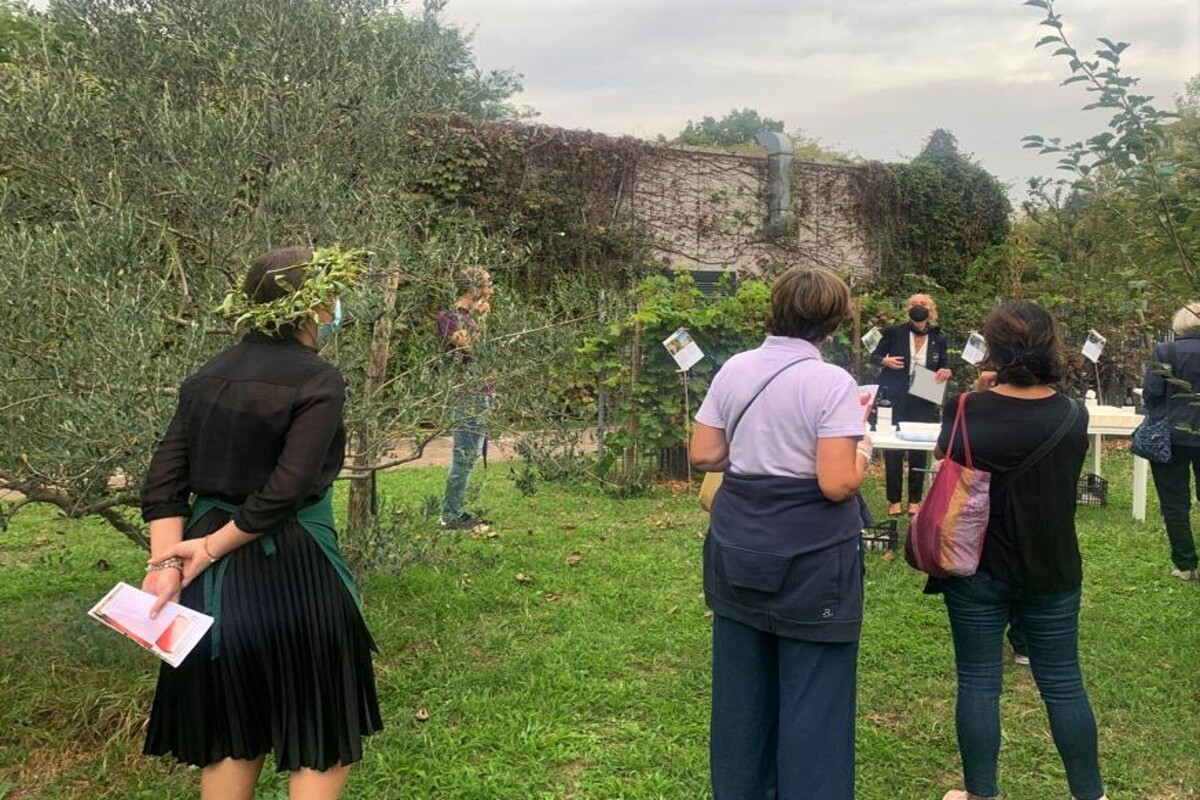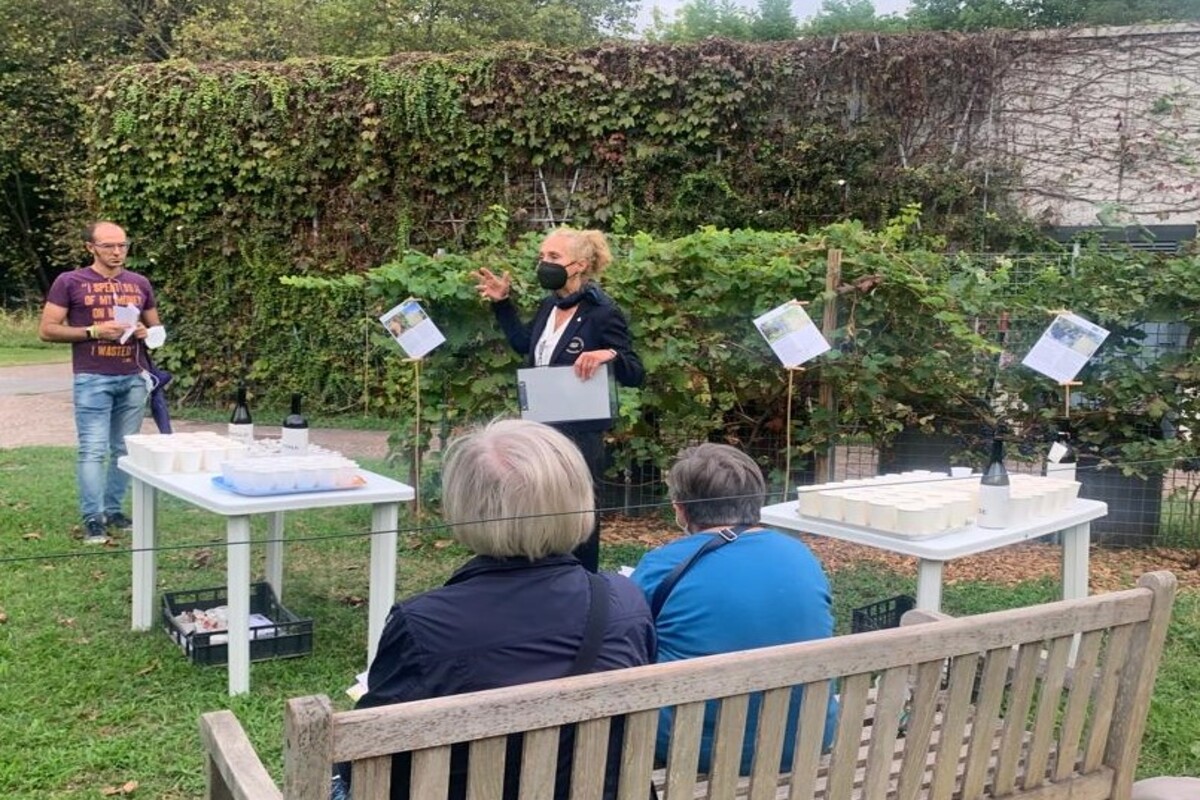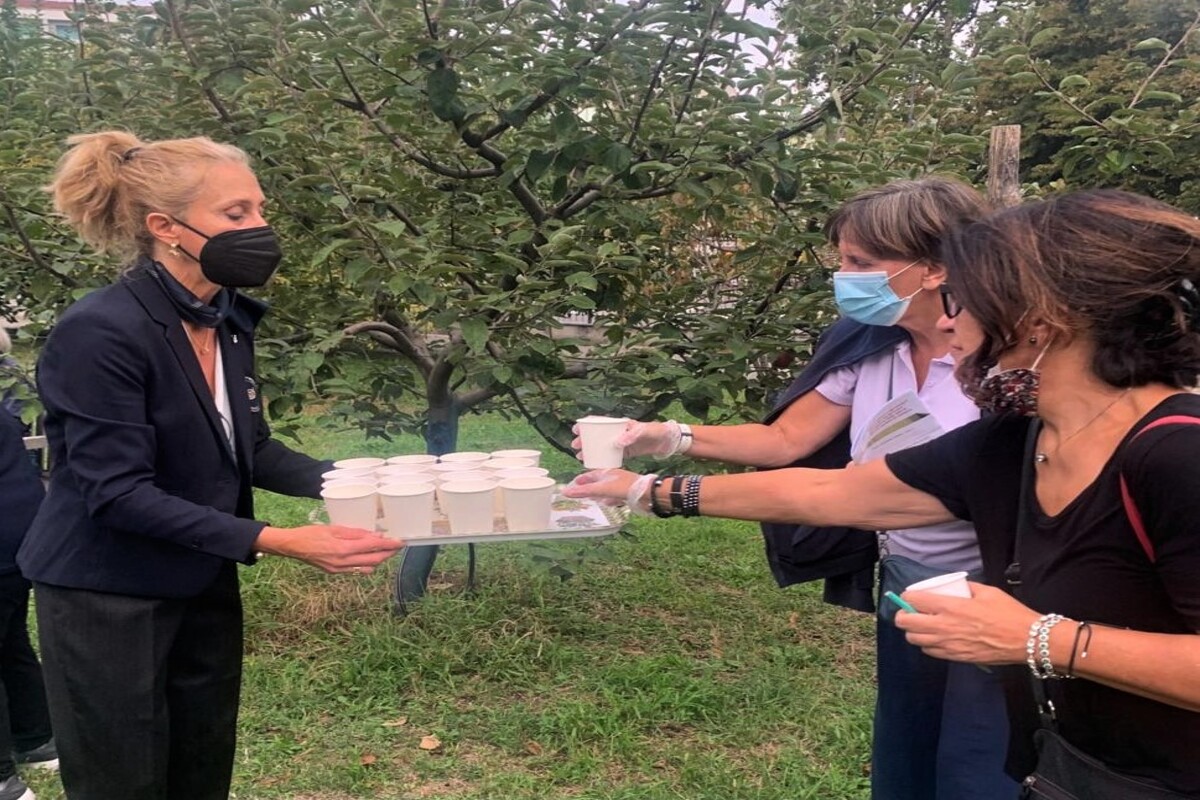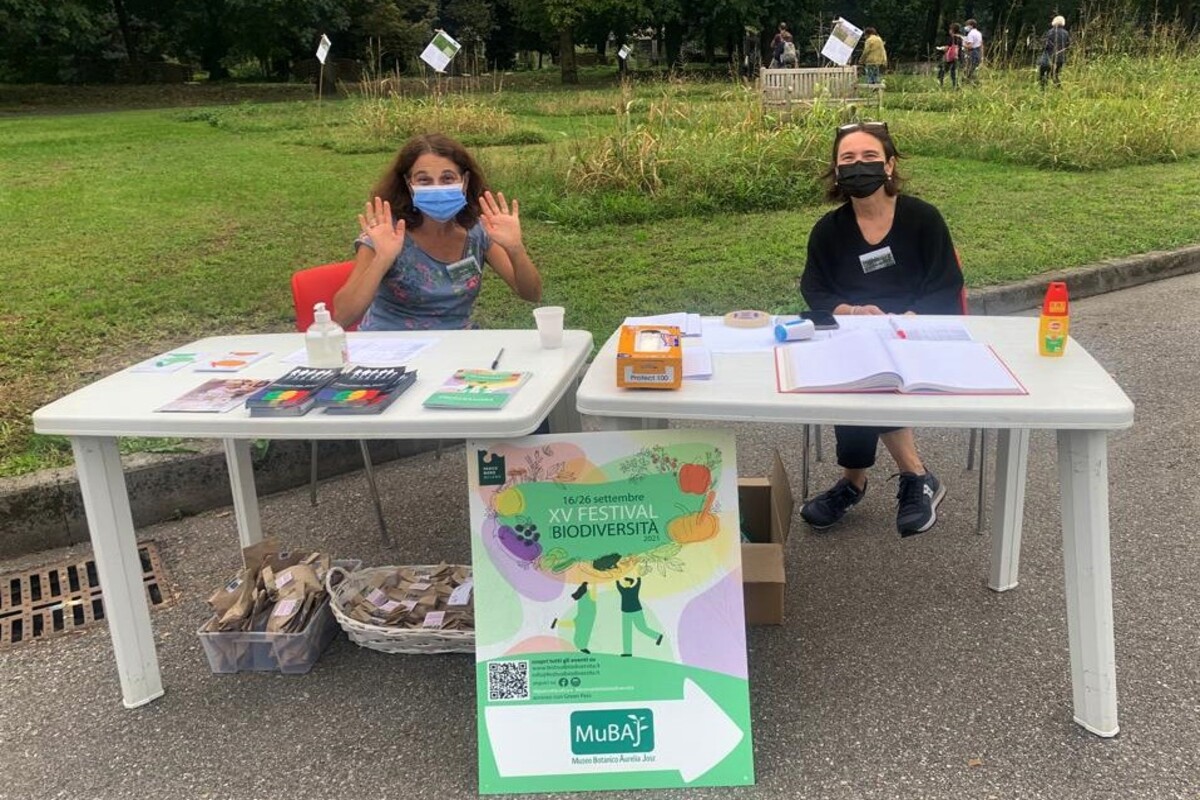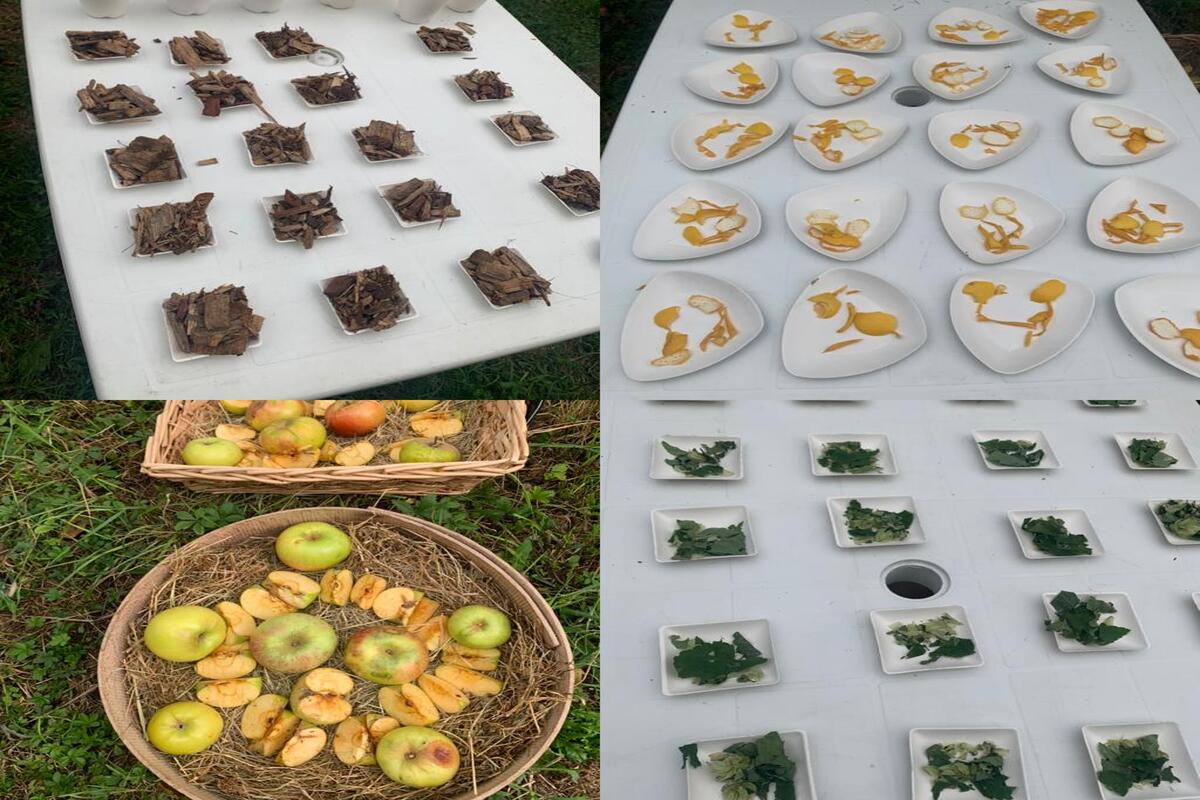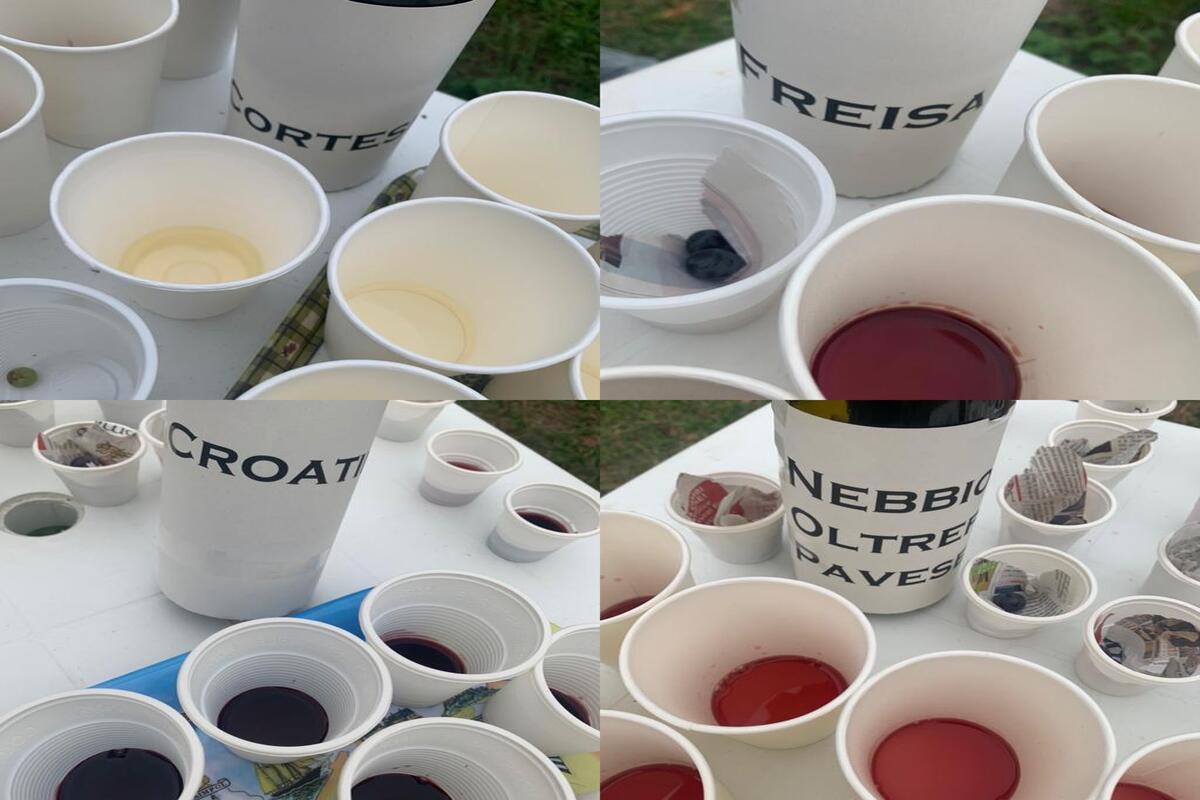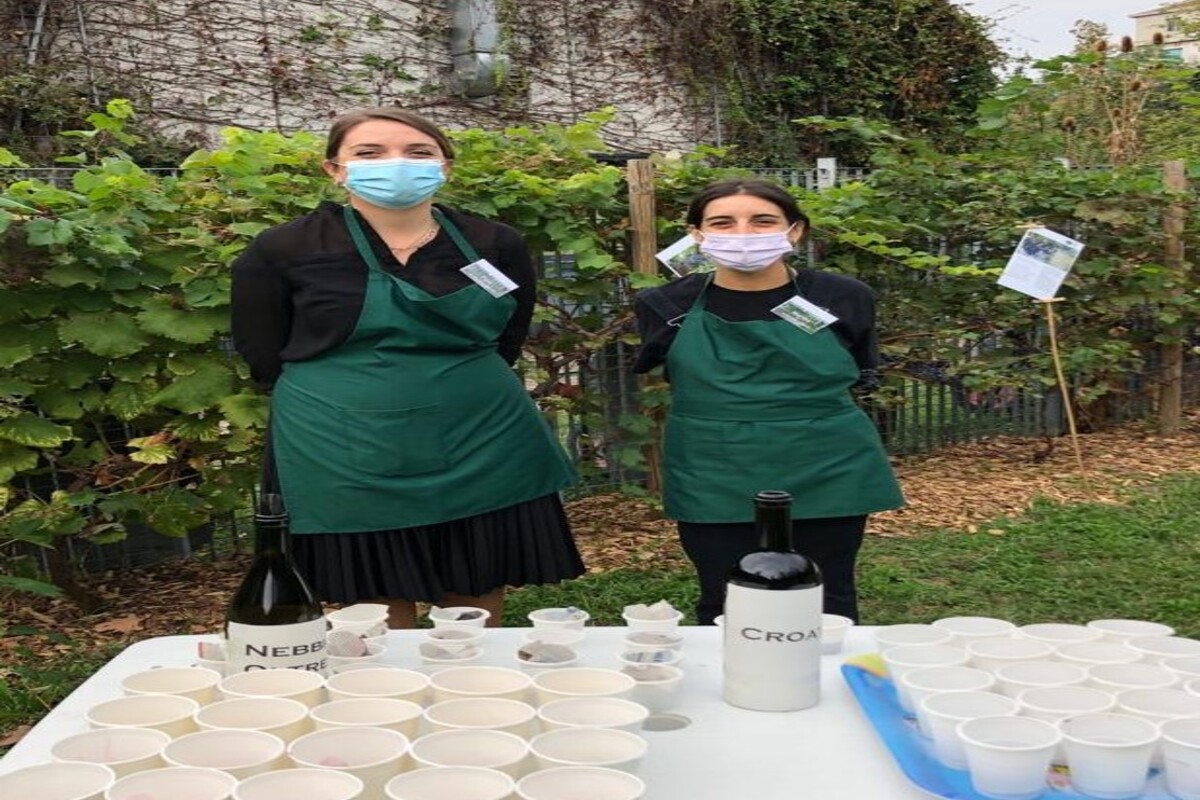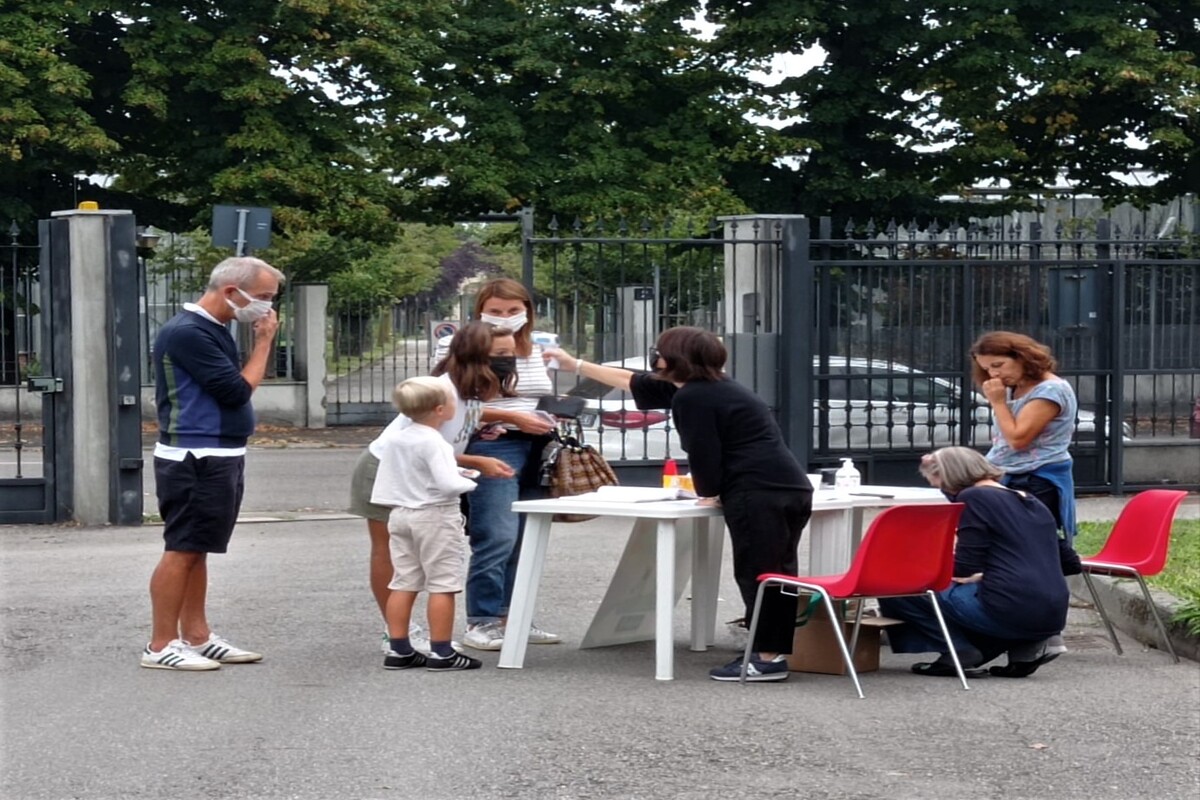
Aurelia Josz Botanical Museum
Town Hall 9
via Rodolfo Margaria, 1 (south side of Maggiore Niguarda Hospital)
How to get: M3 Dergano | M5 Ca' Granda | Tram 4, 5 | Bus 51, 83 | Bike-MI: Piazza Nizza and Maggiore Niguarda Hospital
Parking: on the road via Zubiani | via Margaria
Info and contacts:
- tel. 02 884.44979 - active from Monday to Friday, from 9:00 to 14:00
- Email: museo.botanico@comune.milano.it
The Aurelia Josz Botanical Museum is a project of the Municipality of Milan which began in 2014 and was inaugurated and dedicated to Aurelia Josz in 2015. It occupies an area of 24.000 mXNUMX.
It is an observatory, an evolving laboratory that produces culture and stimuli, dedicated to the discovery of plant life, naturalistic education and respect for public green areas. The protagonists are the spontaneous ecosystems of the Po Valley, their biodiversity, their interaction with the urban environment, as well as agriculture, both global and Lombard, and its history which speaks of the relationships between humans, the plant world and the territory.
The Aurelia Josz Botanical Museum is part of the Green, Agriculture and Urban Furnishings Area of the Municipality of Milan, which is located in the adjacent Villa Lonati. The Area deals with the design, creation of city greenery and its management and maintenance.
The project “The greenery of Milan is precious: let's get to know it at MuBAJ” on the greenery of Milan and respect for the environment, born from the collaboration of MuBAJ Museo Botanico Aurelia Josz and the Civica Scuola di Cinema L. Visconti, is based on three fundamental concepts :
- green is a very precious friend who takes care of us. Reciprocating means triggering a virtuous process that gives us back well-being, especially in the city.
- respect for the environment and, in particular, for the plant world, is generated by knowledge (observation, listening, information). It can/must be expressed in a civic sense, taking care of what is around us correctly.
- the Aurelia Josz Botanical Museum is a space in the Municipality of Milan where care and the search for knowledge are expressed in concrete actions. With seriousness and lightness, many themes are explored in depth, including nature in the city, spontaneous urban biodiversity, and the history of agriculture.
The students of the Social Videomaker Course, with the teachers, produced two series of four films.
The series Milan in a railing house proposes interpretations of greenery, of respect for the environment, of the interpersonal relationships experienced by a small community, which lives in the historic Milanese railing house and which represents the city itself, Milan.
- The discreet charm of weeds.
We see them in lawns, on sidewalks, in cracks in walls, they grow spontaneously in our pots, we often call them "weeds" because they escape our control. They seem insignificant but many of them fed us during times of war or extreme poverty, they cared for us. They are biodiversity. They contribute to life in our city. We can meet them at MuBAJ - watch the video " - The butt of discord.
The film talks about respect for public affairs. The cigarette filter has a very slow biodegradability. Acts of vandalism force the Administration to use a lot of energy to remedy their effects and keep public green spaces decent and efficient - watch the video " - Galeotto was the flower.
Taking care of greenery can generate well-being and love. Even in the city. Especially at MuBAJ - watch the video - The backyard vegetable garden.
Grow in an urban environment. What and how to grow on balconies or in gardens, how to contribute to making the city more beautiful and livable and cultivate a community - watch the video "
The series Green visions uses cinematographic language and is inspired by four genres to raise the viewer's awareness of the importance of plants and nature in the lives of each of us and for our future and on how useful the work of those who observe nature and work together with it is , as it is done at MuBAJ.
- Take care of your future.
We can do this by planting a plant and allowing it to live, because it is a powerful and extraordinary creature that will give us back a healthy, livable, pleasant environment. - Fall in love with a flower.
How many times do we say words of love with a flower, a plant? Subconsciously we therefore know how important they are... Even in the city. Especially at MuBAJ. - Fake plants are scary.
Plants are living beings. Let's focus on the plant world and its presence in our city. Let's learn to know plants and consider them for what they are: living beings, essential for our very existence. - Nature leads to truth.
Nature is us, like the animals and plants that live with us on the planet, being aware of it is equivalent to knowing a simple and essential truth.
The podcasts to discover greenery in Milan are created in the form of dialogues between botanists, greenery technicians, scholars and writers. Born from a collaboration between the Botany Section of the Natural History Museum of Milan, the Aurelia Josz Botanical Museum and the Cave and Ticinello Parks, the podcasts tell you about the green side of the metropolis: they let you meet extraordinary trees through possible interviews, they lead on the trail of species that populate the city or that flourish only on the walls of the Sforzesco Castle, until the rediscovery of the extraordinary richness of Milan's parks, true treasure chests of biodiversity.
For openings we propose workshops, meetings, music,
guided tours, themed games and many other initiatives.
download the flyer >>
The Academy of Fine Arts of Brera al Mubaj
Use this map to explore our spaces and the works of the artists of the Brera Academy of Fine Arts.
Download the map >>
Daughter of Ludovico Josz, from Trieste of Hungarian origins, and Emilia Finzi, from a cultured Jewish family, she was born in Florence in 1869. She graduated in Italian literature in Florence, a cosmopolitan city that influenced her and contributed to forming her progressive mentality, promoter of culture and female emancipation. Endowed with a particular and modern vision of agriculture, at the age of twenty-one she moved to Milan to teach. In 1902 she founded the first female practical school of Italian agriculture in the Stella Orphanage in Milan, to train young women in disadvantaged conditions in the profession, who, in 1904, she transferred to Niguarda.
In 1931 the school, initially supported by the fascist regime as compatible with its training project for the rural masses, was closed. Aurelia Josz refuses to swear to fascism and a period of progressive isolation begins for her, during which she writes two essays. Despite the approval of the racial laws in 1938, she did not leave the country.
She was deported to Auschwitz – Birkenau, where she died in 1944.
We offer you a series of 5 films created jointly, in collaboration between the Educational, School and Environment Section, Il Patto di Milano per la Lettura and the Aurelia Josz Botanical Museum, on the occasion of MuseoCity 2021 dedicated to Aurelia Josz. In these 5 films Aurelia narrates herself in the first person, she talks about the origins of her projects, her ideals, her disappointments, her humanity, from her arrival in Milan to her deportation.
- Miss watch the video
- Niguarda watch the video
- Terrible eyes watch the video
- The farewell watch the video
- The devil is not as bad as he is made out to be watch the video
Calendar opening to the public 2024
For openings we propose workshops, meetings, music,
guided tours, themed games and many other initiatives.
- 6 April 15pm – 00pm - download the flyer >>
- May 18th 15pm – 00pm
- June 15th 15pm – 00pm
- September 28th 15pm – 00pm
- October 19th 15pm – 00pm
- November 16 15:00 – 18:00
- December 14th 15pm – 00pm
RESPONSIBLE GARDENING COURSE 2024
«FROM THE SILL TO THE CITY» 15pm – 00pm
Download the flyer >>
- March 13, Permaculture
- April 17, Introduction to Botany
- May 22, Taleaggio rose
- June 19, Composting, compost tea and macerates
- September 18, Useful and harmful insects
- October 23, Taleaggio tropical plants
- November 20, Historical varieties of fruit trees
- December 18, Introduction to botanical watercolor
=========================
HOW TO GET THERE trams 4 and 5, buses 51 and 83,
MM3 Dergano, Maciachini. Bike-MI: Piazza Nizza and Maggiore Niguarda Hospital.
Street parking: via Zubiani, via Margaria
WHERE WE ARE Via Rodolfo Margaria, 1 - 20161 Milan
(south side of Maggiore Niguarda Hospital)
The original nucleus of Villa Lonati dates back to the 400s, has a "courtyard" plan typical of farmhouses, enriched, in the following centuries, with various buildings. In the 600th century, Gerolamo Lonati, a Lombard nobleman, purchased the villa and the land to be used as a holiday resort and for agricultural production, as was the case with many other country residences in the area. The possessions around the villa include a garden and vast agricultural areas presumably intended for the cultivation of vegetables and mulberry trees, typical of the area.
In 1782 the municipality of Corpi Santi was established, which covers the vast territory surrounding Milan and includes farmhouses, villages and agricultural land. The villa with its possessions were included until 1873 when the Holy Corps were absorbed by the city.
Neglect, abandonment and bombings during the Second World War reduced its volume. The first major recovery and restoration project was completed in 1967, and the second in 2002.
Popular tradition has it that the ghost of a lady resides in the villa, who manifests herself when the moon appears at first quarter, as she is represented in the Lonati family coat of arms.
The Aurelia Josz Botanical Museum is located in an area of 24.000 m300. adjacent to the villa, separated by via R. Margaria, which was used as a municipal nursery and later as a warehouse. It hosts many thematic areas, described in the specific section "The spaces", and the 2 mXNUMX multifunctional building, capable of compensating its energy needs thanks to the photovoltaic system and the heat pump system. It is covered in sarmentose and climbing plants, including clematis, rose, hydrangea, hops, honeysuckle, Canadian vine and false jasmine, which conceal its impact and increase its insulation. It is intended for reception and activities that require a covered space.
The Orchard of the Patriarchs:
It extends over an area of 900 m2014. Planted in September 27, it collects 200 tree varieties which are the heritage of Lombardy agriculture and its history. With the term "patriarchs" we have identified centuries-old plants of the territory ranging from the Prealps, to the plain and to the Oltrepò; some of them reach 2019 years of age. The Frutteto dei Patriarchi was born as a conservation and dissemination project regarding these native fruit varieties for the enhancement of rural biodiversity and the conservation of germplasm (transmitted hereditary material that allows the preservation of genetic and species information). Patriarchs also have an agronomic value, as they have proven to be very resistant: they are rustic plants, that is, capable of defending themselves from attacks by fungi, insects, etc. and require treatment only in rare cases. They have fruits with very particular organoleptic characteristics with notable nutritional properties, for this reason varieties of this type are the subject of studies, with the aim of creating new plants that combine high productivity with their characteristics. These are varieties that are difficult to find as they are excluded from intensive production. The orchard hosts different varieties of apple trees, pear trees, cherry trees, mulberry trees, olive trees, plum trees, two fig trees and a caprifig tree, a peach tree, a black cherry tree, a plum tree, a lotus. Since XNUMX the orchard has also welcomed some vines from the Oltrepò Pavese.
The Labyrinth of Cereals and Corn:
it is 1970 mXNUMX large. and tells of migrations of seeds and plants, of the history of agriculture, of nutrition, of the evolution resulting from selection made by man, of genetics and its applications. It is a living collection of original and rare varieties, combined with some of the most widespread varieties in intensive agriculture. Teosinte corn, the most primitive grasses of the genus Triticum sp. are found there. and those that descend from it: durum wheat and its cultivars such as 'Senatore Cappelli', soft wheat, spelt, einkorn.
The Saliceto:
In March 2018, 50 forest willow plants of different varieties were planted (common or white willow, basket willow, riparian willow, red willow, willow, stipulate willow) with the aim of strengthening the anti-pollution barrier and using, in the future, the branches to build artifacts to be reused at MuBAJ.
The Path of Water and Land:
it is an area crossed by a circuit of canals with observation points that descend below the ground and water level, it is a place for exploration of the native aquatic and riverbank ecosystems. It is populated by reeds, irises, thistles, mint, horsetail, dogwood and many other species.
The Compost area:
for the transformation of waste plant material into fertilization.
Synergistic Garden and Food Forest:
Synergistic agriculture is the cultivation method developed by Emilia Hazelip, who adapted Natural Agriculture (Masanobu Fukuoka) and Permaculture to the Mediterranean climate. The synergistic garden respects the four rules of synergistic agriculture: limited cultivation, no fertilizers, manual weeding and no pesticides.
Read also
Use the services
Updated: 03/04/2024

